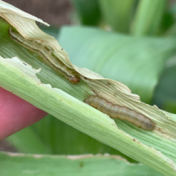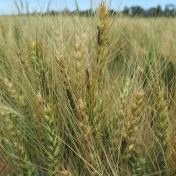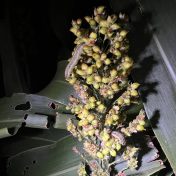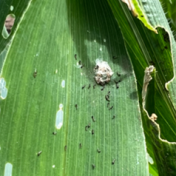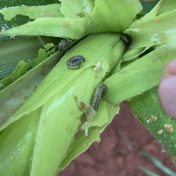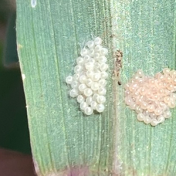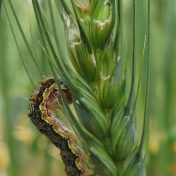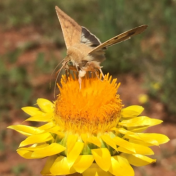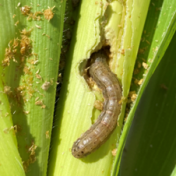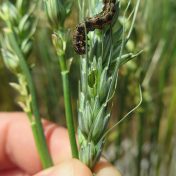Native armyworm species are currently present in many young maize and sorghum crops across southern and central Queensland. Sometimes it is just the occasional larva, but in other situations native armyworms are at higher densities than fall armyworm (FAW). As far as we know, native armyworm are far less damaging to establishing crops than FAW and are unlikely to cause… Read more »
As winter cereals, canola and pulses flower and fill grain, and temperatures rise, the risk of infestation by caterpillar pests increases. Below is a quick refresher on the risk of infestation and crop loss by common caterpillar pests: helicoverpa, native armyworms and fall armyworm. Key points: There is increased risk of infestation by Helicoverpa armigera this spring because of the… Read more »
Maize and sorghum crops across Queensland are experiencing extreme fall armyworm (FAW) pressure. In Central Queensland in particular, sorghum planted in the typical planting window has been heavily impacted by the very high FAW pressure. Persistent, high-density infestations pose a risk to crops from emergence through to grain fill. In an unwelcome development not observed in previous seasons, large FAW… Read more »
Late sorghum is susceptible to FAW damage, and potential yield loss, in the vegetative stage. This article discusses how the yield loss happens and how to determine if your crop is at risk. The information below was generated from both sorghum trials being undertaken at the Gatton research station funded by the Queensland Government and GRDC in collaboration with QAAFI… Read more »
If you are managing fall armyworm (FAW) in maize, you may have noticed that the permit for Affirm® (emamectin benzoate) (PER93226) had disappeared from the APVMA permits portal. PER93226 was temporarily suspended whilst clarification was sought around withholding period (WHP) and use patterns. While PER93226 is now back on the APVMA permits list, it is important to note it has… Read more »
Fall armyworm (FAW) moth catches have increased significantly in some regions over the past few weeks (see trapping counts below). It is unclear whether this increase in trap catches is indicative of migration events (perhaps associated with the recent storm activity) or increasing night temperatures that allow for greater movement of moths that may have emerged locally. Very low densities… Read more »
Many regions in Qld and northern NSW are still experiencing an outbreak of Helicoverpa armigera in wheat. Before the last significant outbreak occurred in 2016, it had been many years since anyone had seen such an event, and while there was a smaller outbreak in 2020, it was not on the scale or severity of this year. In many crops… Read more »
Spring has sprung, and as is typical following a wetter winter, insects are abundant in crops. There are native armyworms in winter cereals from Central Queensland to northern NSW. Aphids are abundant in winter cereals, canola and faba beans. Key drivers of pest abundance in wetter seasons are the increased availability of plant hosts over winter and into spring and… Read more »
Fall armyworm (FAW) are still active across the Northern Grains Region, but inland Central and Southern Queensland have not experienced continuous population build up in crops since the first immigration of moths in September–October. One of the major contributors to this continuing low pressure is probably the very high natural enemy (beneficial) impact on FAW. A number of very common… Read more »
Helicoverpa outbreaks in wheat are relatively rare events. The last big outbreak, in 2016, was the first significant event for several decades, so treating helicoverpa in wheat is not something that many agronomists are familiar with. However, 2020 looks to be a year when helicoverpa infestations in some crops may warrant control. Wet winters are well correlated with outbreaks of… Read more »
